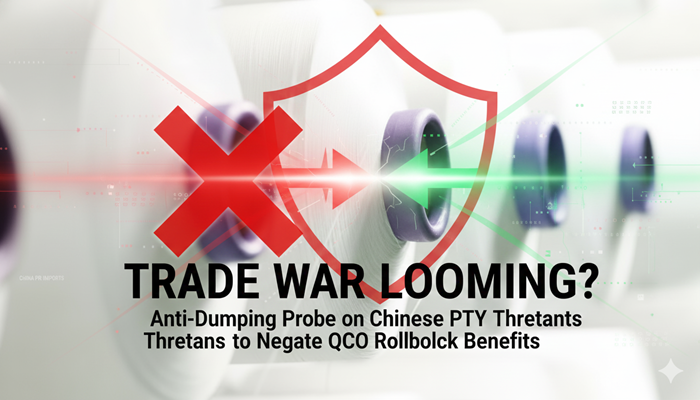"The popularity of Bangladesh RMG is such that every third European has a T-shirt made in Bangladesh and every fifth American wears jeans manufactured in Bangladesh. The country exports $28.14 billion worth of the item or 6.4 per cent of the global share and the export target by 2021 is to push it up to $50 billion. This looks achievable knowing China has shifted its focus from textile to services economy. Amid all these, a question to ponder over is at what cost does this economic development happening? A study by International Finance Corporation (IFC) reveals, every year, 1,500 billion litres of water is used to dye and wash the cotton and clothes for the garment industry. "

The popularity of Bangladesh RMG is such that every third European has a T-shirt made in Bangladesh and every fifth American wears jeans manufactured in Bangladesh. The country exports $28.14 billion worth of the item or 6.4 per cent of the global share and the export target by 2021 is to push it up to $50 billion. This looks achievable knowing China has shifted its focus from textile to services economy. Amid all these, a question to ponder over is at what cost does this economic development happening? A study by International Finance Corporation (IFC) reveals, every year, 1,500 billion litres of water is used to dye and wash the cotton and clothes for the garment industry. This is enough to fill up 600,000 Olympic swimming pools. This water can meet the demand of 8 lakh people for a whole year. For the average jeans, one wears that weighs 1kg, it takes 250 litres of water to wash. This is not at all hard water we are talking about. It’s all drinking water, pumped out from underground.

When such a huge quantity of water is pumped out, a hollow underground is created. As the hollow grows, it creates chances for the earth to cave in. As more and more water is pumped out, the water table goes down. The classic example is Dhaka where every year the water level is dropping by 2.5 per cent. Considering that water table is not infinite, a real disaster will take place sooner.
Increasing pollution levels
The worst part is the garment industries discharge water into rivers and canals after use. This makes the water highly polluted with toxic chemicals and dyes. Bangladesh has around 789 dyeing and finishing factories to serve some 4,000 garment factories, according to the IFC, consuming major part of underground water. If these industries can attempt at reducing water consumption by a fourth with the help of technology, it could drastically reduce the use of chemicals. Additionally, more water needs more gas to heat for the dyeing and finishing of fabrics. Gas, again is a scarce commodity, which is adding to the crisis.
Possible solutions
While Bangladesh uses 250 litres of water, the global standard is 60 to 70 litres for a single pair of jeans weighing 1kg, implying that the country is using four times more water. Experts say, water usage still be brought down to 13.5 litres. For example, every year, around 21.6 million cubic metres of water were saved by the intervention of Partnership for Cleaner Textile (PaCT) programme of the IFC, which worked with 200 factories. According to Nishat Shahid Chowdhury, programme manager, PaCT, these 200 factories could save $16 million a year just by reducing water consumption.
Bangladesh is now conscious about this fact and some companies have started taking positive measures. Earlier Fakir Apparels used 24.96 crore litres of water to wash and dye 1,200 tonnes of fabric a month. But after changing technology, it has reduced water usage to 6.96 crore litres, thereby saving 70 per cent water. The company even recovered its investment of $2.65 lakh in six months. Likewise, Mondol Fabrics has been able to save 27 per cent of water by using new technologies. It needed 120 litres water to process one kg of fabric. Now it needs 80 litres only. It is working to cut down water use further by putting in more technologies.












